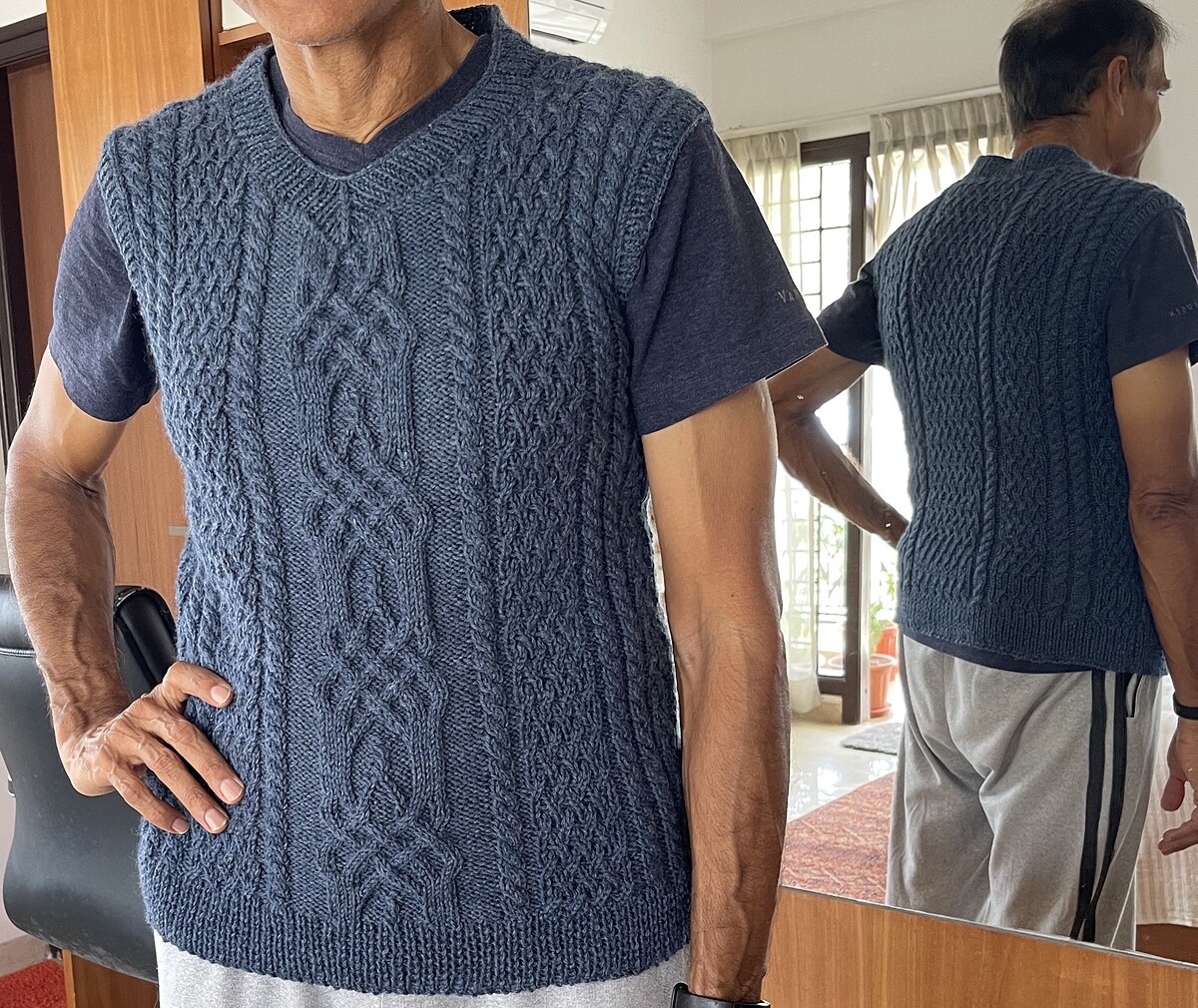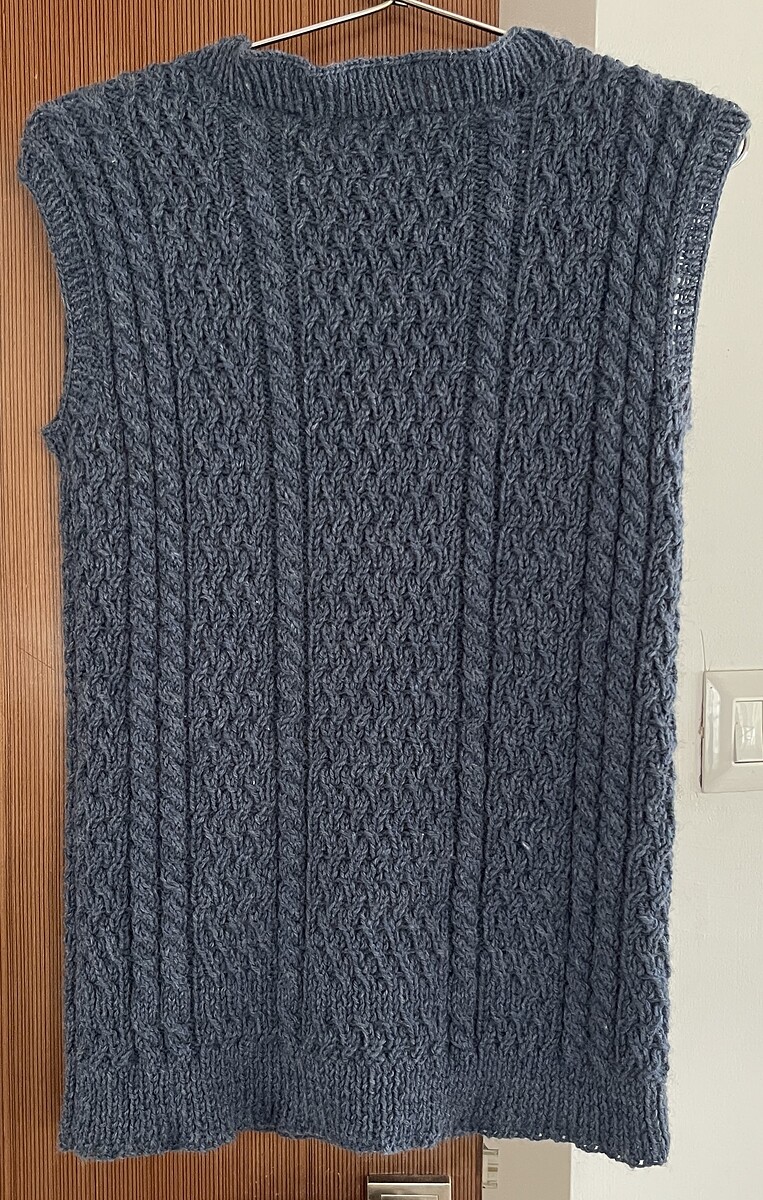@salmonmac, @Creations, I finally finished it :-))))))) 2 months …
Here is a write up and the photos !! Yet again, Thanks a TON !
10th Project - Chapel Hill for Kumar
Hitting a milestone of 10 projects feels awesome - considering that my meditative journey with Knitting started precisely 1 year and 8 months ago. Am glad to have picked up knitting this lovely vest for my husband, Kumar, to celebrate this milestone - not something that was thought through frankly, but coincidentally, so appropriate.
The Chapel Hill Vest recommends Universal Yarn Deluxe worsted with a gauge of 18Stx24 rows for the StSt and 26stx24 rows for the Lattice part. I chose the Valley Yarns Northampton 100% wool that I got on Lovecrafts in an excellent 5-ball deal with gauge 4.5 St = 1” on 5 mm or 5 St = 1” on 4.5mm. With my knitting tension, it just about worked well. Loved the intense centre cable pattern in the front and the alternating cable and lattice on both front and back, which was pleasurable, as there was no monotony at any point.
The Denim Heather color and the texture of the wool both pleasing to knit with, this project took about 2 months to complete, with a 2 week break from knitting while on an active holiday in Japan (where I picked up some beautiful yarn, but more about that when I find a pattern for that yarn).
As always, ever grateful for the help from two dear fellow knitters (really, Gurus) on the Knitting community - @salmonmac and @Creations that gave me the confidence to plough through, as also the updated pattern (a free pattern that was still updated with corrections - that is so cool and empathetic) by Aubrey Busek from Universal Yarn.
Having the eventual recipient of this project watch me through the journey, at close quarters, also joining in the excitement of the progress being made - as against seeing pictures of the progress (as was the case for all my earlier projects), does add that extra zing to the excitement.
Finally, here is one project where I didn’t make an elaborate row by row instruction for myself prior to starting, and just used the detailed pattern instructions with calculations and notes as I went along. That is a clear first and a big one for someone who is constantly wondering whether I am making the right moves 
Havent blocked it (although the pattern asks to do so before sewing the front and back sides together.
Fits my husband very well - he claims it is one of his best fitting sweaters !
One thing I would have liked to avoid - the back neck of the sweater wrinkling like in the pic. The number of stitches I got to pick for both sleeves and neck were lesser than what the pattern suggested - for the sleeves, nearly 20 less, for the neck about 10 less (and I tried to sneak in a few extra stitches for the neck). Is that why the back of the neck is not sitting good enough, I wonder. Am also tempted to block - would the cables sit more snugly if I block ?
In any case, I feel happy (while looking for where to improve)


